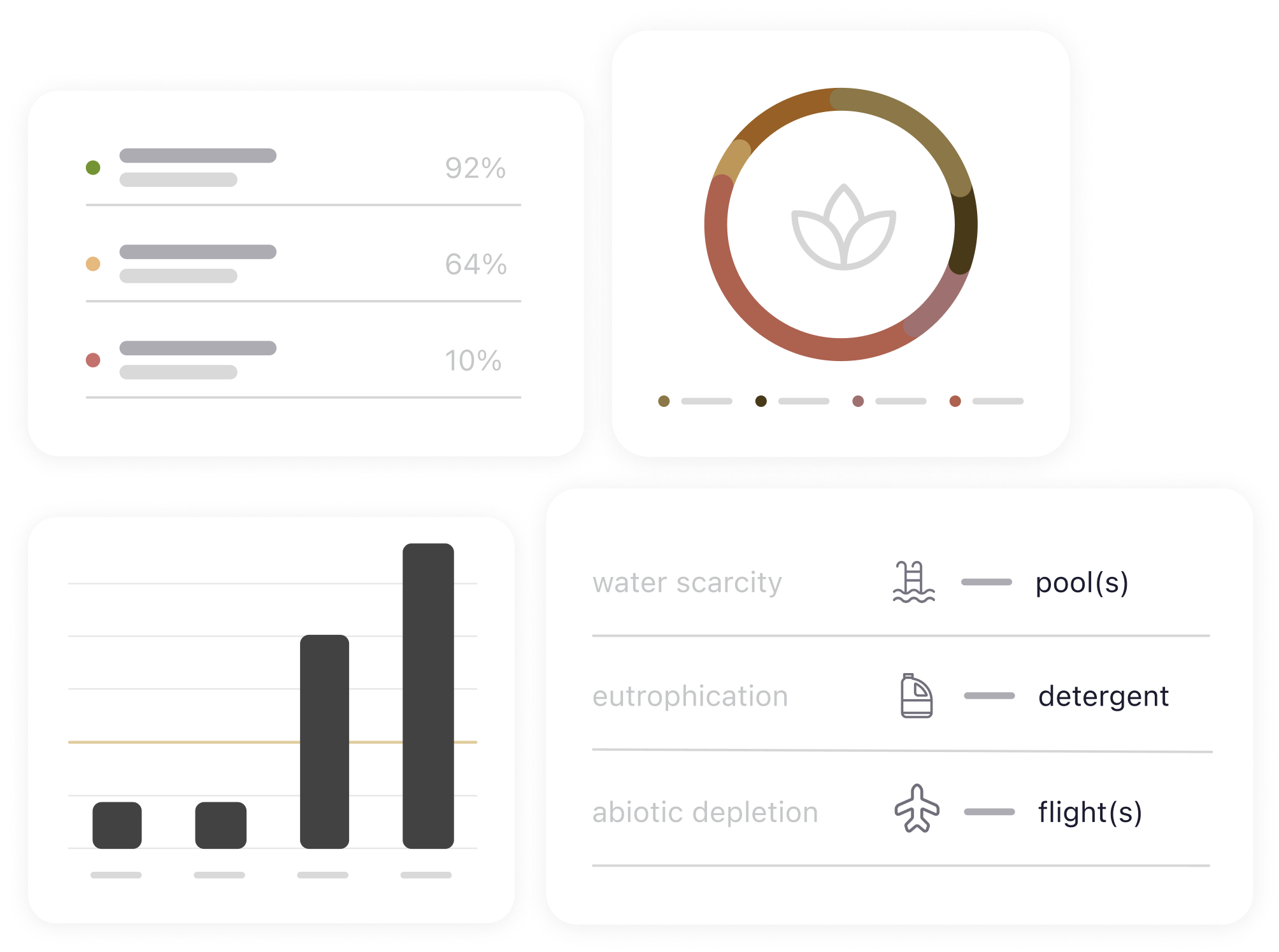The time is running out. Very few fashion brands have a complete vision of their supply chain, and climate change is a direct consequence of this lack of transparency. The massive impact of the fashion industry is triggering climate disasters that create disruptions in textile supply chains. This is not an isolated problem, it’s a progressive deterioration that will worsen over time. It is crucial for fashion companies to invest wisely in innovation to ensure the resilience and prosperity of textile businesses.
Sustainability is not exclusively a solution to environmental problems but the only path to economic survival for those aiming to thrive in the fashion business in the long term
Sustainability is often seen as a solution to environmental problems. However, these environmental issues have a profound impact on the economies of the fashion industry. The climate disasters we witnessed last year in Turkey, Pakistan, and other key regions in the textile supply chain directly affect the profitability of fashion companies that depend on them. Therefore, sustainability is not exclusively a solution to environmental problems but the only path to economic survival for those aiming to thrive in the fashion business in the long term.
According to the latest report from Cornell University and Schroders, the failure to adapt supply chains to address rising temperatures and increasing floods could result in a potential loss of $65 billion in export earnings by the year 2030.
With these projections, it is urgent for fashion companies to strategically allocate their budgets to ensure that there are funds to boost innovation and secure the survival of the business.
Five key investments to thrive in the fashion industry
In the current landscape, investments play a fundamental role in the success and sustainability of businesses. As the industry faces increasing pressure to address environmental, social, and regulatory concerns, strategic investments are essential to staying ahead. Here are five key investments to thrive in the fashion industry:
- Invest in traceability technologies. This investment is essential to ensure transparency and accountability in textile supply chains. This technology will enable you to track items accurately throughout their lifecycle, from their origin to the final product, providing a clear view of each stage of the process.
A PLM system, such as the one offered by BCome, makes it easier for you to analyze the geographical distribution of your suppliers, strategically selecting those located near your facilities. The visibility of material breakdowns and supplier details facilitates the identification of bottlenecks and inefficiencies within the supply chain. By analyzing the data collected on the platform, you can identify which points of your value chain require attention.
- Invest in impact assessment systems. Investing in impact measurement tools allows you to have detailed metrics to quantify and analyze the overall impact of your business operations, helping you identify areas for improvement and make informed decisions to promote more sustainable production. Along with traceability technology, these investments not only strengthen consumer transparency and trust but also facilitate regulatory compliance required by a more responsible and conscious fashion industry.
Having a Sustainability Management Platform like BCome allows you to conduct comprehensive impact assessments through Life Cycle Assessment, both environmentally and socially, of your products to identify vulnerabilities at each stage. This assessment is crucial for acquiring insights and becoming aware of the real impact of your own activities.
- Invest in recycling technologies and infrastructure. To promote a circular ecosystem, it is essential to invest in recycling technologies. By adopting circular solutions, your business can reduce its environmental footprint and decrease dependence on finite resources. Investing in the development of recycling infrastructure will enable efficient collection, processing, and reuse of materials, driving progress towards a more sustainable future for the fashion industry.
To facilitate the measurement of the circularity of your products, BCome has developed a new tool that includes the calculation of Circular Economy Indicators (CEI). This update helps you understand the extent to which the linear flow of your items has been minimized and the circular flow maximized, as well as the duration and intensity of their use compared to a standard product.
- Invest in sustainable optimization of conventional suppliers. It may not always be possible to work exclusively with sustainable suppliers, however, not investing in optimizing the systems of your conventional suppliers can have serious consequences. The absence of sustainability criteria in supplier operations increases the risks to your supply chain, potentially disrupting production and damaging your brand reputation. By investing in your suppliers’ facilities, you have the ability to mitigate these risks.
- Invest in supporting the sustainable initiatives of your suppliers. Allocating funds to support the sustainable initiatives of your suppliers is crucial for your brand to achieve its climate targets. An example is Inditex, which, following the bankruptcy of Renewcell, has invested a significant sum in Infinited Fiber, another textile-to-textile recycling company. By ensuring that your partners have the necessary resources to propel their sustainable initiatives, your business will promote a reduction in impact throughout the value chain. Leaving the entire burden of financing innovation to your suppliers will ultimately strangle the system, preventing its evolution and thus hindering the progress of your business.
Despite how necessary these investments are, we are aware that financing them can pose challenges, especially for companies with tighter budgets seeking to adopt more sustainable practices. If this is your case, take note of some key strategies you can consider when seeking resources to finance the necessary investments to drive sustainability in your business:
- Government grants. Explore opportunities for grants offered by local, regional or national government agencies. Research funding programs specifically aimed at sustainability and technology projects in the fashion industry. For example, the Spanish government has recently launched the call for Grants to boost the circular economy in the textile sector, which will distribute €97.5 million to increase the circularity of the Spanish textile industry.
- Support from nonprofit organizations. Seek collaborations with nonprofit organizations that support sustainability and business development initiatives. Take advantage of advisory and funding programs offered by these organizations to gain guidance and additional resources. An example of this is Fashion for Good, a global platform that works to drive sustainable innovation by offering acceleration programs and funding for startups and emerging companies developing innovative solutions for sustainable fashion.
- Industry initiatives and associations. Engage in initiatives and associations that promote sustainability and innovation in fashion. Gain access to funds and resources through specific programs designed to support investment projects in technology, infrastructure and sustainable practices. An example is The Fashion Climate Fund, an initiative launched by the Apparel Impact Institute focused on providing financing and technical support to projects aiming to promote climate change mitigation throughout the fashion supply chain.
- Strategic partnerships with investors. Explore collaboration opportunities with private investors and investment funds interested in sustainable projects. Consider establishing strategic partnerships that offer access to capital, expertise and networks to drive growth and implementation of sustainable initiatives.
- Bank financing. Consult with financial institutions about financing options, such as loans or lines of credit, to support investments in technology and sustainability. Evaluate the terms and rates offered by banks to ensure that the financing is viable and sustainable for your company in the long term.
There is nothing more strategic than defining where you invest your resources. A smart allocation of your budget aimed at ensuring the resilience of the company will undoubtedly involve the need to secure the sustainability of your fashion business. At BCome, we are here to ensure that every euro invested in our platform contributes to making more informed decisions to drive the growth and sustainability of your company. Could you let us know your needs? We’re here to help!









